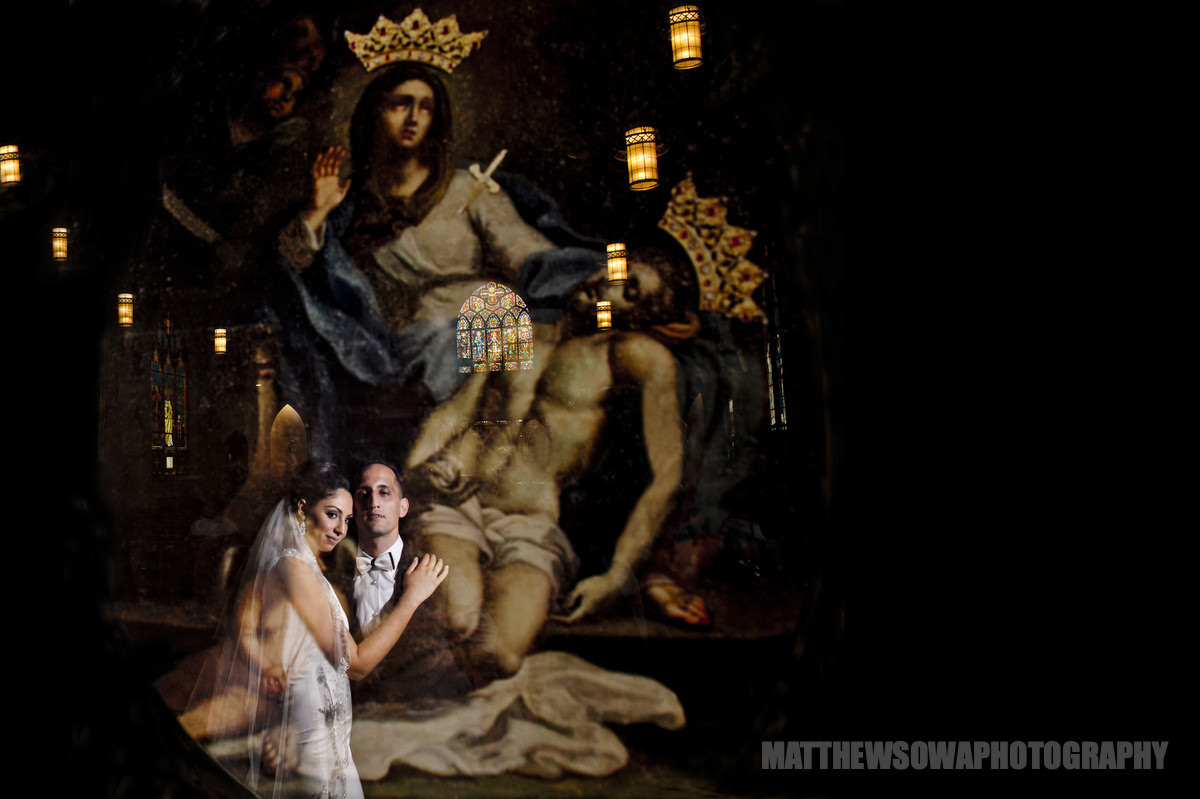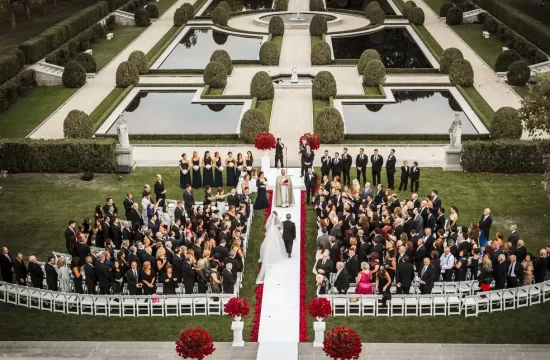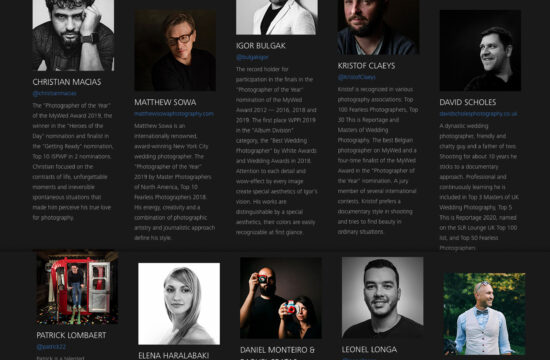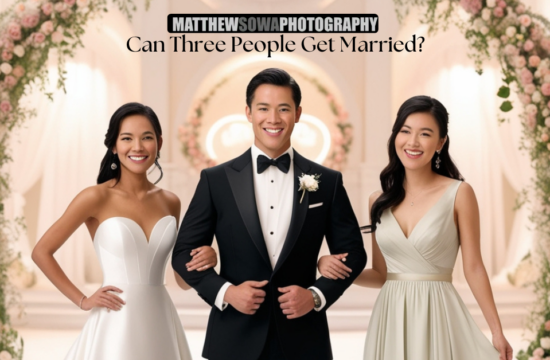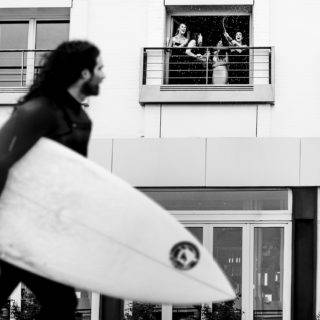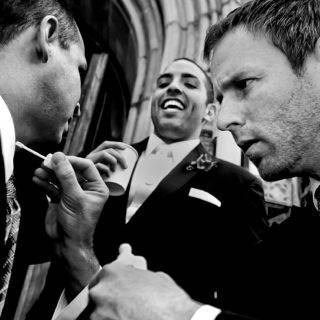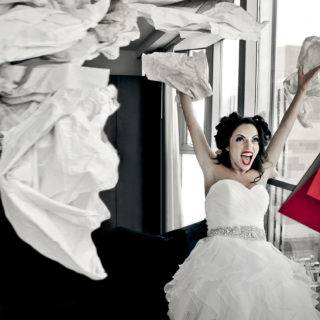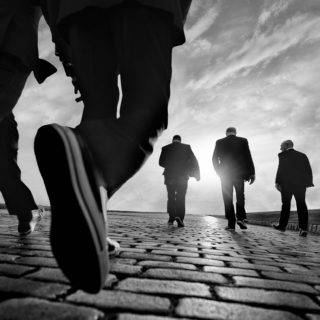Church Wedding Photography: When I was asked to shoot my friend’s wedding party at a beautiful old church, I’ll be honest—I was a bit nervous. I knew churches could have strict rules, and I didn’t want to be that intrusive photographer who ruins the ceremony with a clicky camera. Some churches don’t allow photos at certain times or in certain places, especially during the more sacred parts of the ceremony. I’ve even heard stories where couples had a bad experience with photographers who didn’t respect these rules and got in trouble with the officials.
Before the big day, I personally talked to the bride, groom, and the vicar. They told me that in the past, some guests were asked not to take pictures during the ceremony because it was believed the noise from the camera would detract from the solemnity of the occasion. So I made a clear plan. I brought my Sony A9, which is completely silent, and promised to only take shots when it wouldn’t disturb anything. I also made sure I was the one official photographer so no one else would jump in with an expensive camera trying to shoot for free. Honestly, the good communication between me, the couple, and the church made everything smooth. My top tip? Make sure you understand the church’s rules and be respectful. As long as the bride and groom are happy with the arrangements, the problem is already solved.
Church Wedding Photography Rules Feel Like a Gamble
I’ve shot many weddings in churches over the years, and honestly, the photography rules in churches are a roulette wheel. Sometimes I walk in and everything’s smooth. Other times, it’s like playing a game of “who can upset the couple the most.” Despite the dropping attendance numbers, some church venues seem to be doubling down on strict photography rules. Man, you ever have one of those days where you’re just trying to do your thing, and someone throws a wrench in it? I’ve had church folks—priests, coordinators, you name it—look me dead in the eye and say stuff like, “No pictures during the ceremony, period,” or “You’re glued to the back of the room, don’t even think about moving.” Like, what?Ugh, it’s the worst, right? I’m just trying to snap that perfect moment when the couple’s all teary and in love, and boom—some church official’s giving me the stink-eye like I’m committing a crime with my camera. Like, chill, I’m not breakdancing in the aisle or anything! All I want is to get the shot—you know, the one they’ll stick on their mantel forever. But nope, it’s like I’m getting grounded for even daring to do my job.
One time at St Mary’s, I was informed by a very serious Church Council member that photographs were not to be taken during the service because the marriage is a sacred moment. I get it, I really do. It’s a religious ceremony, and there are reasons for keeping the focus on the couple and the tradition. But I feel, sometimes, the rules are so inflexible, they forget we’re just there to help the bride and groom preserve memories. They said, “I’m afraid, this is just how we do things here. It’s not just about flashes and whirring cameras.” HOWEVER, they did let me shoot The Kiss after the proclamation, saying I’d get a quick moment to grab that one for the album.
Back in Selston Parish, especially between 2006 and 2014, the frustration really peaked. That was the era when literally anyone could set up a Facebook page and call themselves a wedding photographer. A friend of mine had a bad experience where someone with little or no experience showed up, their camera playing a tune each time it turned on, and making a loud beep with the flash on fully all the time. That’s when vicars started getting really very angry. Everything became too clicky clicky, and although nobody uses flash in a church anymore, those old impressions stuck around.
Now, even actual professionals with an expensive camera like my Sony A9 (which I use specifically because it’s silent) get lumped into that mess. Once, I talked to the bride and vicar personally, made sure they were okay with me being there, and even got one official to agree to a compromise. We had good communication, and that solved a bit of the problem. So my top tip? Make sure the bride and groom are happy with the arrangements, and photographers must be respectful of the space. It’s all about communication, respect, and understanding the balance between shooting beautiful moments and not being an intrusive photographer.
Church Wedding Photography Rules Change with the Mood
Churches can sometimes feel unpredictable when it comes to photography rules. From my own experience, these rules often feel totally randomized, and it mostly depends on who is marrying you and what their mood is like on the day. I’ve had weddings where the vicar was super chill and said, “Do what you need to,” and others where I was told to stand at the back and not move at all, even if the view was blocked. It’s not always about the ceremony—it’s about the person in charge and their own view on photos in the church. So, my little advice? Always ask ahead of time, and be ready for anything.
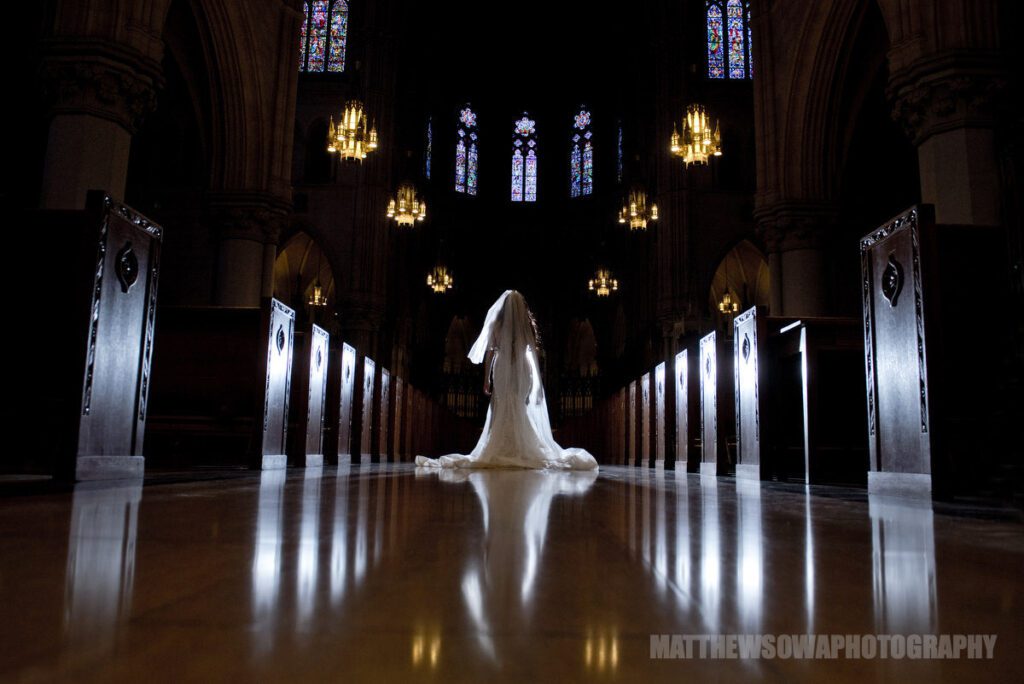
Church Wedding Do’s and Don’ts for Taking Cellphone Photos
As someone who’s seen a lot of weddings, I can tell you that guests taking cellphone photos during the wedding can be a tricky topic. Clergy and photographers often have strong feelings about it. Sometimes, I’ve seen priests conferring with couples before the wedding, which ends with them making an announcement about cellphone photography use. Usually, this happens before the processional, and the important parts of the announcement include silencing their phones and only taking photos during the processional and recessional.
But for me, the most important thing the priest can say—from a photographer’s perspective—is to ask guests to refrain from blocking the aisle with their bodies or cellphones. I’ve had moments ruined because the bride’s face was blocked by a guest’s outstretched arm holding a cellphone. That’s why it’s smart for couples to talk about good church wedding cellphone etiquette with their families and guests ahead of time. Many older family members still think they need to take their own photos because, back in the day, photographers charged for prints. Letting everyone know that all the photos will be digitally available for free can really help guests resist the temptation to get in the way.
What I Do When Uncle Bob Becomes the Photographer
Honestly, I’ve lost count of how many weddings I’ve seen where an Uncle Bob or Aunt Betty suddenly decides they’re now the semi-official photographers. At first, this is usually not a problem. But every now and then, things get a bit… much. I remember one wedding where Uncle Bob literally squeezed himself behind the bridesmaids during the whole ceremony, looking like a mix between a ninja and a yoga instructor with a camera. No matter how many quiet looks I gave, he wasn’t budging. That moment taught me something important.
Now, I personally make it a habit to look out for those eager aunts and uncles before the ceremony begins. They’re easy to spot—usually carrying equipment just as big as mine! Instead of getting annoyed, I say hi, crack a smile, and treat them like friendly extras. I always tell the couple, too—it’s helpful for them to politely ask their family to let the hired photographer do their job, especially during key moments. And if one of those Aunt Bettys manages to capture a shot I missed? Good on them!
Sometimes, I even include their snaps in the coverage if it makes sense. People were amused once when Uncle Bob accidentally featured in half the shots, so I just went with it. That way, we all stay relaxed, and the couple doesn’t have to worry. Honestly, I’ve found it’s better to welcome them than fight them.
Of course, moments like when the father gives the bride away or when the groom lifts the bride’s veil can be tricky with so many people and not much room to move. That’s why I always say—you can only give guests a few instructions in advance, not too many. Let the day flow naturally. That’s where the magic is.
How I Get Ready to Photograph a Church Wedding Ceremony
When I’m about to photograph a church wedding ceremony, I always go in with a bit of a plan in my head. Man, I always take a sec to plan out how I’m gonna pose the couple and their crew for those big church-front photos. I usually get the bridal party to fan out on both sides of the bride and groom—it just looks so good, you know? And when they’re finally hitched and head down those steps, I’m totally ready for that moment when everyone’s tossing rice, birdseed, or rose petals, or maybe blowing bubbles. It’s just this super happy, love-filled vibe, and I live for capturing it!
I’ve learned over time, it’s important to guide the kids a little—ask them to toss gently, so it falls above the couple in an arc, not straight at their faces. It might sound small, but nobody enjoys getting a face full of birdseed, trust me!
Some couples want to reenter the church for formal shots at the altar, so I always double-check before leaving. Also, if you’re like me and rely on GPS, here’s a big tip: always follow the limo carrying the couple. I once had a wedding where the limo got a flat tyre, and because I was behind them, I could help out. I ended up giving them a lift to the next location while the driver sorted the tyre. A good photographer always keeps the bride and groom in sight, no matter what.
Another thing that helps me is having a quick list of important numbers—the couple, their immediate family, the limo company, and the reception venue. It’s a small detail, but it can really save the day if plans change or something unexpected happens. One time, we had a sudden change in timing, and that little list saved a lot of stress.
As someone who’s never seen without a camera at her side, I know how important it is to pick the right photographer for your own wedding day. My friends and family made sure I didn’t touch mine that day! That’s why I chose Dan. He was professional, but still lighthearted. He made us laugh, captured beautiful emotions, and took those completely candid shots we all love. I couldn’t have been happier.
Why I Always Attend the Rehearsal (And Arrive Super Early on the Day)
Look, for me, showing up to the wedding rehearsal is non-negotiable—it’s like the secret sauce of pulling off a killer shoot. I’m not just there to nod along and clap for the couple. Nah, I’m scoping out the venue with eagle eyes. It’s not about how pretty the place looks (though that’s nice); it’s about clocking the nitty-gritty. Like, where’s the light hitting at 4 p.m.? Is it gonna wash out the bride’s dress or give that golden glow we’re all chasing? I need to know the space inside out—every corner, every weird shadow.
The rehearsal’s my chance to crack the code on the day’s flow. I’m mentally noting where the groom’s sneaking in, where the maid of honor’s dipping out, and yeah,even where the band or choir’s setting up their gear. That stuff matters when you’re trying to frame a shot without elbowing Aunt Karen in the face. I’ve been burned before by surprise pillars or random speaker stacks blocking my view, so now I’m all about spotting those traps early. Okay, so sometimes I’ll grab a napkin or whatever’s handy and just doodle out a little map of the setup. Nothing Picasso-level, just some wonky lines to figure out where the heck everyone’s going during the ceremony and how I’m gonna dodge around without tripping over a chair. I know, I know, it’s kinda geeky, but man, it’s like my brain’s secret weapon. When the wedding day hits and it’s all go-time, that scribble’s what keeps my shots on point and my sanity intact.
Oh, and the people side? Total gold. The rehearsal’s my shot to say hi to the family, the wedding party, whoever’s milling around. I’m not trying to be their BFF, but just putting a face to the camera makes a huge difference. I’ve noticed when I chat with folks beforehand—crack a joke, ask about their role—they’re way chill on the big day. It’s like they forget I’m there snapping away, and I blend into the chaos instead of being “that photographer guy.” Breaks the ice every time. Honestly, I always enjoy meeting the parents and family—I love spotting the similarities in siblings and parents. It’s like seeing little pieces of the couple’s story in their loved ones.
Most importantly, I make sure to meet the ushers and the best man. They’re often the ones who keep things flowing on the day and are super helpful when it comes to group shots. And if, for some reason, I can’t attend the rehearsal, I at least ask for the order of service in advance—though I’ve learned that not everything will be in there. For instance, at my first military wedding, I only knew about the surprise military salute because I went to the rehearsal. I’d have missed that moment otherwise!
And here’s another thing I’ve learned the hard way—if you are not early, you are late. I always arrive at the church with plenty of time, long before anyone expects me to. It avoids stress, especially if the bride arrives just moments after. Being early gives me time to reassess the lighting, mentally prepare, and get in the zone. It also gives me a chance to capture some beautiful candid moments, like guests arriving or the groom waiting nervously at the altar. Those shots often turn out to be some of the most loved ones.
Aisle-Walking Moments That Still Crack Me Up (or Make Me Cringe)
Man, walking down the aisle is sold as this magical, movie-star moment, isn’t it? Like, you see those glossy pics where everyone’s gliding toward the altar, all glowy and graceful, like they’ve rehearsed it their whole life. But let me tell you, I’ve seen the behind-the-scenes, and it’s more like a blooper reel half the time.Take my friend’s wedding—her big entrance was going so smoothly until her veil got snagged on some random chair. She’s tugging, smiling like nothing’s wrong, but I swear I saw her whisper, “Are you kidding me?” under her breath. Or this other time, the ring bearer—cute kid, total wildcard—decided he’d rather sprint down the aisle like it was a race. Rings went flying, people gasped, and the best man had to do a ninja dive to save the day. And don’t even get me started on the time I almost ate it myself because my shoe decided it didn’t want to cooperate with the carpet.
It’s those messy bits, the ones nobody puts on social media, that make me chuckle years later. They’re what make the whole thing feel real, you know?But, oh man, behind the scenes? It’s a whole different story. I’ve witnessed some aisle moments that I’ll be laughing about—or low-key wincing over—for years.Like, there was this one time my cousin’s heel got stuck in a crack on the outdoor aisle runner. She played it off like a champ, but for a solid three seconds, it was her versus the rug, and the rug was winning. Or the flower girl who decided halfway down that she was done—just plopped right there, basket and all, petals flying. The crowd was dying laughing, but her mom? Panic mode. And don’t get me started on the groomsman who tripped over absolutely nothing—dude swore it was a ghost, but we all know he was just nervous.
It’s wild how those moments, the ones that don’t make the Instagram cut, are the ones that stick with you. They’re messy, they’re human, and they’re what make the day real, you know?From brides gliding in perfect timing with the music, to moments that honestly felt like a comedy sketch.One thing I always remind couples: if someone is walking with you, you should be on the right of whoever is with you. That’s the traditional side. However, if you’re doing a modern twist and the person you’re marrying is walking with you, this advice doesn’t really apply—just go with what feels comfortable and natural between you both.
From my side of the lens, there’s always that quiet tension right before the walk starts. If you’re the one standing at the end of the aisle, watching your partner come towards you, you’re about to feel something I can only describe as being gently slapped by a wet fish, while someone taps the back of your knees with a birch branch—that’s the kind of emotional wave that hits. It’s a mix of nerves, excitement, and love all rolled into one.Oh, and one more thing—watch out for heating grilles in the middle of the aisle. I’ve seen shoes get stuck more than once. Not every church has them, but when they do, and there’s no carpet runner, it can be a bit tricky. I always do a quick check during setup, and if I spot any, I let the couple and their party know ahead of time. A small thing, but trust me, it makes a difference.
When the Aisle Walk Doesn’t Go to Plan
Let me be honest—walking down the aisle can look magical, but it’s also the part where things can go hilariously off track. I’ve seen it happen more times than I can count, and it usually starts with not having a clear order decided in advance.Sometimes couples don’t think much about who’s going first, or the order the maids or men are going to trundle down in. That’s okay if everything just flows naturally, but if you’ve got a bunch of children walking first, you really need someone to take custody of them at the end of the aisle. Otherwise, they’ll just freeze halfway, looking lost. And believe me, they will. They’re kids. That’s what they do.
What happens next? Well, everything backs up. You’re stuck standing halfway down the aisle, trying not to panic, awkwardly grinning at Auntie Judith, whom you haven’t seen in 20 years and suddenly have nothing to say. It’s one of those moments that feels 10 times longer when it’s happening, even though it’s just a few seconds.So for me, as a photographer, I always suggest that couples plan this part properly. Not a big production—just a simple rundown of who’s going when, and who’s waiting at the other end. It keeps things smooth and makes my job easier, too, because when the aisle walk is seamless, so are the photos.
Try to Avoid a Godblock Moment
One thing I’ve learned from doing church wedding photography over the years is to always prepare for the unexpected, especially when the vicar decides to walk you down the aisle. It might sound helpful, but sometimes they’re only half a metre in front of you, and guess what? I’m Godblocked. That’s the moment when a member of the clergy steps right between you, my camera, and the perfect shot. There’s a joke I’ve often heard photographers say in these moments: “There’s a bride here somewhere…” and trust me, we say it with a mix of panic and humor.
To stop this from happening, I always suggest this small trick to couples. When the vicar starts walking, just stop for a moment and wait until they’ve reached the end of the aisle. That way, you have a clear run, and I can capture the magic without losing that moment. If you don’t, this classic moment from the guide to wedding ceremonies in churches turns into a comedy—except no one laughs when the bride is missing in the shot.
No Need to Dash Down the Aisle
Funny thing is, you’d be surprised how many people sometimes charge down the aisle like it’s a sprint finish. I’ve seen it quite a few times, and honestly, unless it’s a short one, it’s not a huge issue—but it still takes something away from the moment. Take your time with this. You should only be doing this once, so why rush? Enjoy the moment, walk slowly, breathe, and most importantly, give me a chance to acquire focus. I promise, the slower pace makes the photos so much more meaningful.
Trust me, you’ll be surprised how many faces you’ll pull without even realizing it—little expressions, blinks, even glances here and there. But the faster you go, the less chance there is for that one killer shot. Now, if you want to get this over with, though, I won’t stop you—be my guest. Just don’t be shocked when your aisle walk turns into a blur with no emotion, and I whisper to myself, “Charrrrge!”
Position Yourself in the Center of the Aisle
Churches often have this beautiful symmetrical architecture, and honestly, it’s a testament to the meticulous design that went into them. How I Make Church Wedding Photos Feel Like Magic (Even When It’s Chaos)Yo, shooting a wedding in a church just hits different. Those huge rooms with tall ceilings and colorful windows? Man, they’re so cool.It’s like the building’s begging to be part of the story. But let me tell you, nailing those iconic shots takes some serious plotting—and a little bit of luck.
Finding the Sweet Spot in the Aisle
One thing I’m obsessed with is getting that perfectly balanced shot right down the center of the aisle. Churches are built like works of art—everything’s symmetrical, from the pews to the altar—so I’m always telling couples, “Yo, stand dead center, okay?” It’s not just me being picky; it’s about making the whole scene pop, with the architecture framing them like a painting. If they’re facing each other, maybe holding hands or kneeling for a prayer, it’s pure gold for symmetry. I’ll even sneak a peek at the floor tiles to make sure they’re lined up just right. Sounds extra, but when you see the photo, it’s like, boom, total perfection.
Savor the Kiss for the Camera in Church Wedding Photography
Oh, and the kiss after they’re pronounced husband and wife? That’s when I’m on. I’m like, Hey, keep that kiss going—gimme a sec to get the pic!
A lingering kiss lets me grab a wide shot with the whole church vibe—pews, flowers, teary guests—and then zoom in for that close-up where you can practically feel their joy. Those shots? They’re the ones couples frame and cry over years later. It’s not just a smooch; it’s the moment, and I’m hustling to make sure it’s unforgettable.
Camera Settings for Church Weddings
Now, churches can be a pain with lighting. The altar’s usually lit up like a stage, but the rest of the place? Dark as a cave sometimes. I start with 2500 ISO—it’s my safe zone to expose the altar without blowing out the highlights. If I need to catch Mom dabbing her eyes in the front row, I’ll tweak the shutter speed on the fly. If it’s extra gloomy, I might bump up to 3200 ISO, but I’m careful not to go too wild and end up with grainy pics.
f-stop
For f-stop, I’m all about f/2.8 on my 70-200mm lens—it’s wide enough to drink in the light but keeps things crisp. If I’m feeling artsy and switch to my 35mm, I’ll drop to f/2.0 for that dreamy, blurry-background look. Shutter speed’s another beast—I stick to 1/200 to avoid any shaky nonsense, especially when I’m zooming in on vows or ring exchanges. If things speed up, like during the recessional, I’ll crank it to 1/400. For chill moments, like guests sitting still, I can ease down to 1/125. It’s all about staying ready for anything.
Shutter Speed in Church Wedding Photography
Man, when I’m shooting a church wedding, picking the right shutter speed is everything. Gotta keep those pics crisp, you know? I always kick things off at 1/200—works like a charm to stop any shaky nonsense, especially when I’m zooming in with my 70-200 lens. Like, when the couple’s exchanging rings or doing stuff at the altar, hands are moving, and that speed keeps it all sharp. No blurry disasters, just clean shots that pop.Hey, if it’s real bright, I set my camera to 1/400 to catch quick stuff—like people moving—without it getting blurry. But for folks just sitting in the pews? I drop it to 1/125. Keeps the pics clear, no mess.Depends on how dim it is or if anyone’s fidgeting, you know? It’s all about nailing that sweet spot so the shots come out sharp and you don’t miss those little moments—like Grandma wiping a tear. Gotta keep it clear, no fuzzy messes!
Read this: https://www.matthewsowaphotography.com/courthouse-wedding-photographer/
White Balance in Wedding Photography
White balance is my secret weapon against those gross yellow church lights. I set it to 3200 Kelvin to keep things warm but clean—no one wants their dress looking like it’s been dipped in mustard. It’s a small tweak, but it makes the colors feel true to the day.
After the Ceremony- Keeping It Smooth
Once the ceremony’s done, it’s go-time for family portraits. I’m always begging couples to make a list of who’s who and give their VIPs a heads-up. Nothing’s worse than Uncle Joe wandering off for a smoke when you’re trying to get the group shot.I’ve got a blog post floating around with tips on this—basically, keep it simple, tell everyone where to be, and it’s way less stressful.If there’s a big exit planned—like rose petals or sparklers—I need to know ahead of time. I send couples a questionnaire before the wedding to spill all the details, so I’m not caught off guard. I’ve shot some epic exits in Chicago churches, and trust me, a little heads-up makes it next-level memorable.
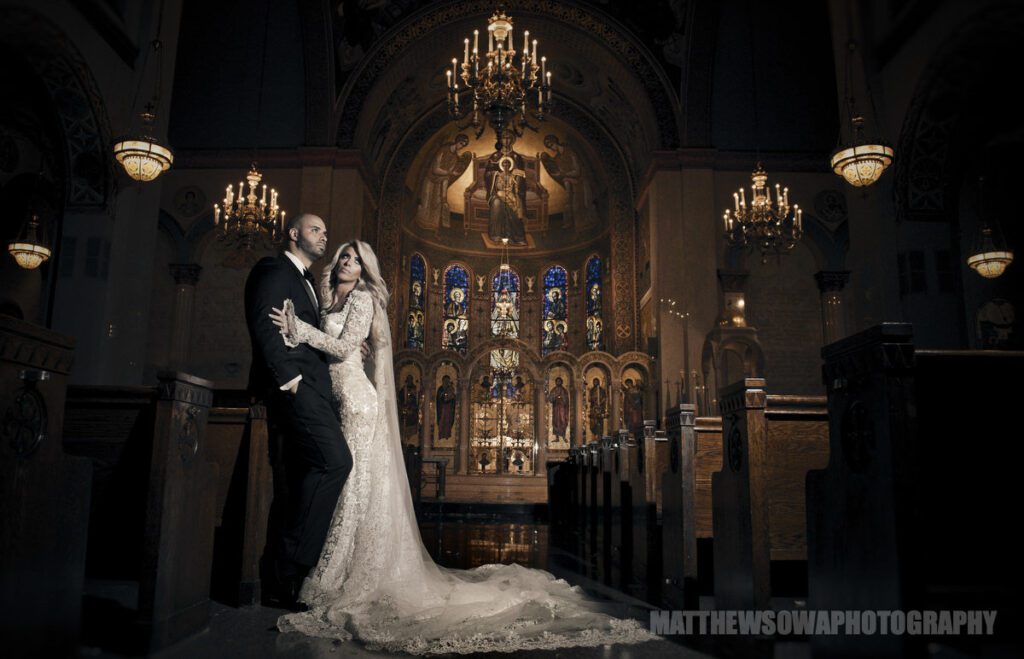
Communicate Any Special Exits
Hey, if you’re planning a cool exit after the ceremony—like petals flying or a fun car—tell your photographer ahead of time, yeah? I send couples a quick list of questions before the wedding to know what’s up, especially for big moments like that. It helps me get ready so I don’t miss it. Doing a church wedding in Chicago? Yo, hit me up! I can share some ideas to make your exit just as awesome as the main event.
Church Wedding Photography Tips for After the Ceremony
Before the ceremony even starts, I’m chatting with the priest to get the lowdown on their rules. Some are cool with me moving around; others give me the stink-eye if I step too close. I’ll also ask if the couple can do a quick redo kiss after the announcement—those first ones are sometimes so fast I barely catch ‘em, and slow shutter speeds in dim light can make it blurry. A few extra seconds? Chef’s kiss for a sharp shot.I’m also picky about picking my spots early. I’ll scope out where I’m parking my tripod, where the bridesmaids’ bouquets are gonna land, all that jazz. I even check in with the maid of honor to make sure she’s ready to fluff the bride’s train when they hit the altar. Little stuff like that saves me from scrambling.
For ring shots, I’m yelling (politely) at the couple to hold their hands steady and show off those bands. I move quick so I’m not blocking Grandma’s view—nobody wants a photographer hogging the spotlight. And during the recessional, I love it when couples pause for one last kiss before they strut out. It’s a killer shot, and half the time, guests are snapping it on their phones too, which is honestly kinda cute.
Gear Switches for Inside and Out
When we head outside or back in, I’m flipping settings like a DJ. Outdoors, I drop to 100 ISO with a touch of fill flash to keep things bright. Inside, I’m cranking up the ISO and going full flash if it’s dark. If there’s time, I’ll snag a couple of shots with the priest—those always feel special, and I’ll email ‘em to the couple later as a bonus.
Quick Q&A from Stuff I Get Asked All the Time
Best settings for low light?
I start with 1/200 shutter speed, f/2.8, and 2500 ISO. Tweak from there depending on how moody the church is.
How do I shoot a church wedding?
Lean on natural light from windows, use a tripod to stay steady, and plan your angles ahead of time for big moments like the kiss or the bride’s walk.
What does a church wedding mean?
It’s a marriage done in a church, usually with a full-on religious vibe—vows, rings, priest, the whole deal.
Flash or no flash?
Depends. If it’s dark, maybe a subtle flash, but check the church’s rules first. You don’t wanna be that guy.
General camera settings?
Low ISO like 800 indoors, fast shutter (1/200+), and wide apertures (f/2.8 or lower) to make the couple pop against a soft background.
Conclusion
Shooting a church wedding is half tech, half heart. You gotta know the layout, nail the timing for those big moments, and be ready for light to throw you curveballs. But it’s also about catching the love, the little glances, the stuff that makes the day sacred. Whether it’s sneaking a candid of the couple giggling or setting up a perfect family portrait after, every click tells their story. With a bit of prep and the right headspace, you’re giving them photos they’ll get all teary over for years. That’s the gig, and I’m here for it.



